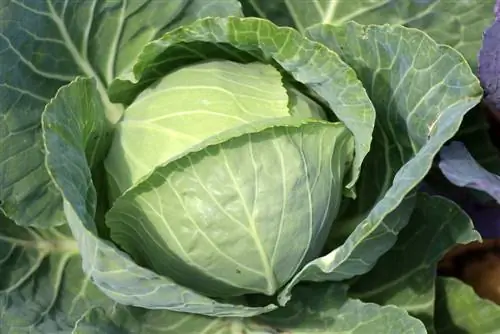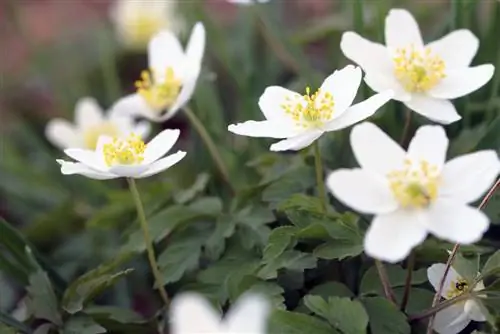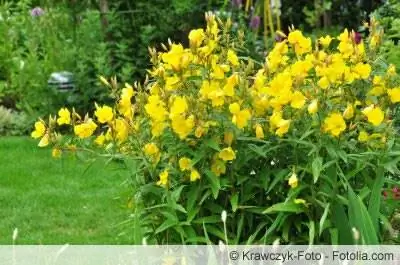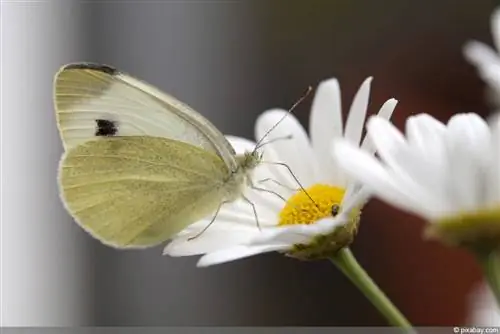- Author admin [email protected].
- Public 2023-12-17 03:39.
- Last modified 2025-01-24 12:45.
Cabbage is one of the most popular vegetables in Germany because it can be eaten cooked or raw. However, it has its own demands on the soil, but those who pay attention to these will be rewarded with a rich and tasty harvest. The nature of the soil is very important, and above all that the white cabbage must be preferred. This cannot be sown straight away, only the young plants.
Preparing the soil
White cabbage loves humus-rich and medium-heavy clay soil. If the soil is too moist or sandy, either compost or manure can be mixed into the soil. A bucket with 10 liters per square meter should be sufficient here and the compost or manure should be mixed in well. This means the soil is optimally prepared and the young plants can now be planted. To do this, you should choose a sunny but wind-protected place in the garden, because this is where the white cabbage can thrive best.
White cabbage thrives best in medium-heavy, humus-rich, loamy soil. Soil moisture plays an important role and should always be sufficiently ensured. To improve overly permeable, dry or very sandy soil, mix in a 10 liter bucket of well-rotted garden compost or stable manure per square meter. Particularly beautiful heads can be harvested in locations that are well protected from the wind. The white cabbage must be grown in the cold or seedbed and later planted in the final location. A sunny spot with permeable soil should be chosen for this.
Sowing and planting
With its many different types and varieties, white cabbage can be sown almost all year round except in the winter months. In general, the early varieties are grown under glass, the mid-early ones in cold frames and the later varieties directly outdoors. The pointed cabbage is sown in August in a bed with 5mm deep grooves and a row spacing of 15cm. The correct sowing time is very important for pointed cabbage, because if you sow too early, the plants will grow up too quickly and form solid heads; if you sow too late, the pointed cabbage will no longer fully ripen
Summer cabbage
is sown thinly in 5mm deep grooves with a lateral distance of about 15cm in mid-spring. When the seedlings are strong enough, they are thinned out to 5cm and the growing young plants are placed in their final location at the end of May to the beginning of June. The bed must be hoeed regularly during the summer months and must never dry out.
The sowing of seeds only begins in May and can be extended twice more. This means that the white cabbage can be harvested until late autumn or even winter. From June onwards, the young cabbage can be placed in the outdoor bed. The distance within the rows should be approx. 50 cm and the distance between the rows should be approx. 60 cm. The bed must then be kept constantly wet, especially in summer when it is very dry. Of course, only if it hasn't rained, so watering might be canceled.
Autumn and winter white cabbage
sown in the same way as summer cabbage, but not until mid-May. Later you can do two more sowings to extend the harvest season into late autumn and winter. The young plants are planted on site in June. The distance in the rows 60cm apart should be about 50cm. The bed is kept moist by constantly watering. The plants need a lot of water, especially in the dry summer months.
Cultivation
In order for the cabbage to thrive properly, the following steps should be followed:
- Prefer white cabbage in a seed or cold frame
- Choose the right location, it must be sheltered from the wind and sunny
- Prepare the soil with compost or manure before planting
- Maintain a planting distance within the bed of approx. 50 cm
- A distance of approximately 60 cm between the beds
- Water regularly, because cabbage cannot tolerate drought
- Fertilize at certain intervals, as white cabbage needs a lot of nutrients
- Always loosen the soil and remove dead plants
- Only harvest the inner head of cabbage, the outer leaves in the compost
This is how the white cabbage feels most comfortable and is guaranteed to grow really well. Of course, this requires a lot of work, but the reward is he althy vegetables from your own garden. Growing your own is the best alternative, especially for people who want to avoid chemicals. However, white cabbage is not really suitable for small gardens, this also depends on the quantity. Above all, there are various types of cabbage that can be planted earlier. This means you can harvest the entire year.
Regular watering is a must
So that the soil can release all its nutrients, it must be watered regularly. Since the water seeps away too quickly in sandy soils and too slowly in clayey soils, the nutrients are not released properly. This is why the right choice of soil is so important, because without it the cabbage cannot grow. That's why the soil should be loosened up at regular intervals and the weeds are then removed straight away. So that the cabbage really gets all the nutrients it needs, it should also be fertilized. Of course, care should be taken not to fertilize too much. So everyone can make their own fertilizer from nettles, or buy a suitable one from the gardener.
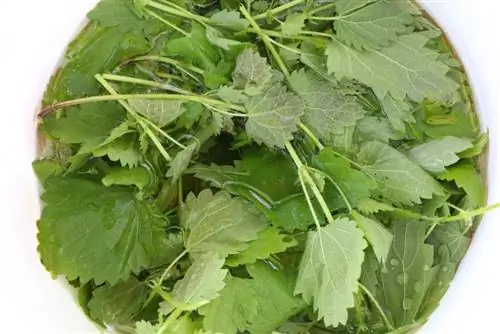
Make your own nettle manure as fertilizer
To do this, simply take 1 kg of nettle leaves and 10 liters of water. Crush the leaves and then cover them with water and let them steep for 2 weeks. Stir at regular intervals of a few days. This nettle manure should then be distributed as fertilizer every three to four weeks. Such a fertilizer is guaranteed to be environmentally friendly and completely chemical-free, which can be very important, especially in your own garden.
Diseases and pests
One of the diseases that can occur in white cabbage are leaf spot, downy mildew and club root. To avoid these diseases, dead plant material should be removed from cabbage at regular intervals. This also applies to the bed, as this is where clubroot can spread. This also includes liming the soil regularly and, of course, loosening it up again and again so that the white cabbage feels really comfortable and can grow particularly well.
Cabbage hernia, downy mildew and leaf spot are among the most common diseases of white cabbage varieties. To prevent this, dead plant material is removed, which provides a good breeding ground for diseases and pests. Thorough liming and regular loosening of the soil prevent dangerous clubroot.
Harvesting and proper storage
When harvesting, the outer and loose leaves are cut off. Only the inner and firm head is harvested. If the white cabbage is to overwinter, it should be dug up with the roots and hung upside down in a dark cellar. But white cabbage can also be used as sauerkraut to make a delicious delicacy that tastes even better when homemade. Of course, there are many delicious dishes that taste even better with your own cabbage.
Even if the cabbage no longer has roots, it has a long shelf life. Simply store it in a cool place, as keeping it is easy. The only attention it needs is until harvest. But here you have to look after this every day, unless it has rained. In particularly hot summers, it sometimes even has to be watered in the morning and evening, otherwise white cabbage cannot grow. But otherwise, even gardening beginners can get along with this vegetable without any further problems. Of course it's possible that slugs want to get to the cabbage here. These should then simply be removed by hand or with a beer trap. Otherwise, with proper care, white cabbage or white cabbage is less susceptible to disease, which in turn ensures a good harvest. White cabbage must be earned.
Popular varieties
- Marner All Früh, summer white cabbage - a very early variety
- Braunschweiger, autumn and winter white cabbage - autumn variety with flat-round, white heads
- First-born, pointed cabbage - medium-small, blunt-tipped heads that can be harvested very early, good for autumn sowing

